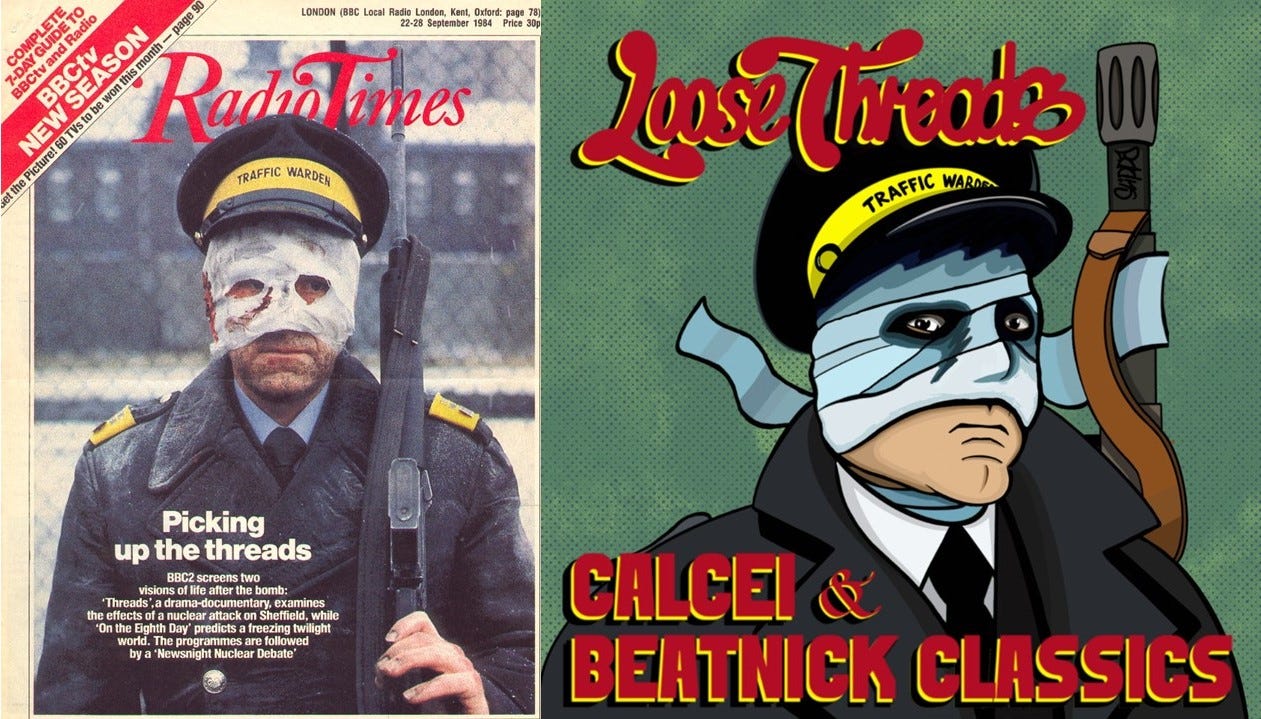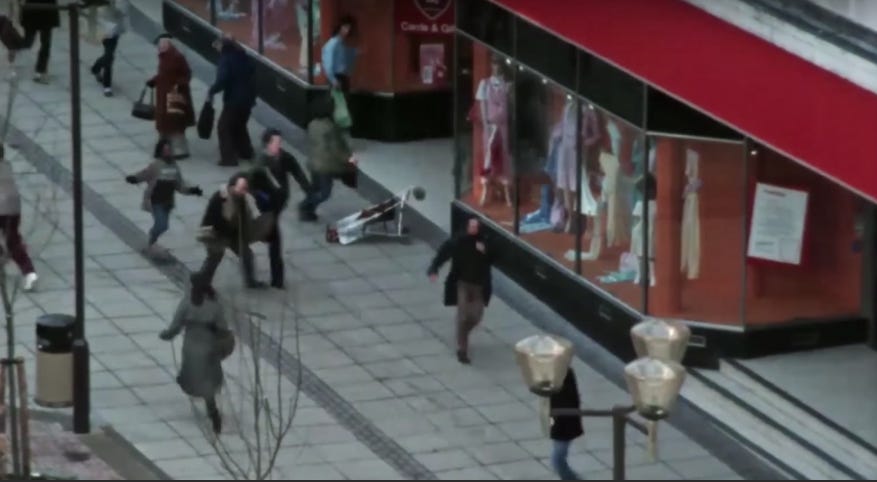1984: The Year that Almost Wasn't
Heat was swirling around the western world in 1984. Temperatures grew to incredibly dangerous levels, rooms were sweltering, the streets were ablaze; cities, towns, villages, hamlets, smallholdings - everywhere there was human inhabitation existed under the continual threat of nuclear war.
The Strategic Arms Limitation Talks (SALT) helped ease tensions during the 1970s: the SALT I and II agreements of 1972 and 1979 resulted in the two major superpowers introducing restrictions on their antiballistic missiles and strategic missiles capable of carrying nuclear weapons. However, renewed Cold War tensions fired up again during the early 1980s as the two superpowers continued their gigantic arms amassing and competed for political, social, and economic space in the Developing World.
The Cold War was again, very much burning.
As a 13-year-old, I was becoming increasingly aware of this threat; as tensions grew internationally and through the nation-state, anxiety was rife through the youth. Like many teenagers with a mind and a heart, I joined the CND. However, it was not the news broadcasts and rhetoric of politicians that propagated this decision, but music and film.
In early spring of 1984, I was fortunate enough to travel to Switzerland on a school trip as the token working-class kid (the trip was paid through a local authority grant). In the crisp air of The Swiss Alps, nuclear war was far from my mind, this was a tonic that an anxious kid needed. Over five short days, I learnt to ski badly and build fabulous snow-people with the local kids. I was being a kid, and it was awesome. But on our final night’s stay, my guts dropped out of my torso and my brain was scorched, as our hosts decided it would be an appropriate farewell event to take us all to the cinema. To watch The Day After.
Today, as I write this, I can still see a deformed limb clutching a stone, reaching up to chime the bell for church service (of course, there was no church, not in terms of building, it had been reduced to a pile of radiation-infused, smouldering rubble. I can still see the figures in the street – first scarpering in terror – then frozen in a nanosecond, first turning scarlet, their skeletons showing, before incinerating into a thousand plumes of dust as the scorching light of the bomb zapped across the landscape. I can still see John Lithgow, face stiff, already haunted as he watches the missiles launching through the atmosphere. I can still see the crowded panic in the supermarket, the crammed freeway of a failing mass urban exodus; the moment the two kids are watching cartoons, and the national emergency message interrupts their show. The pit of my stomach feels as hollow now as it did then.
After the film, we went home. I was staying in a basement room, converted by my host family for my stay. My night was restless, troubled, taciturn.
That same year, Frankie Goes To Hollywood’s fabulously poignant and powerful ‘Two Tribes’ was inescapable, not from Trevor Horn’s extraordinary production, not from Holly Johnson’s deft lyrics, and certainly not from the music video. Additionally, and in true ZTT style, ‘Two Tribes’ was released through various guises, mixes, and titles – puzzling to navigate but captivating. Fear was real and music was not an escape, but a way to deal with the situation. There was ‘Two Tribes (Annihilation)’, ‘Two Tribes (Surrender)’, ‘Two Tribes (We Don't Want To Die)’, ‘Two Tribes (Hibakusha)’, ‘Two Tribes (Keep The Peace …)’, and possibly the most harrowing due to its commentary and unforgiving gaslighting through its phrases, ‘Two Tribes (Carnage)’.
Rap music was also significant in pointing to the threat of nuclear war during 1984: Melle Mel’s epic verses in ‘Beat Street Breakdown’ diverts from a sonnet to mark Ramo’s death to a broader cultural fear:
“A newspaper burns in the sand / And the headlines say ‘Man Destroys Man’”, “Spendin’ multi-billions and maybe even trillions / The cost of weapons ran in the zillions”, and most soberingly, “Sights unseen and voices unheard / And finally the bomb gets the last word …”
Furthermore, lesser-known songs like ‘Don’t Let ‘Em Drop The Bomb’ by Kold Kreu, The Future’s ‘Nuclear Holocaust’, and of course, Melle Mel’s ‘World War III’ accentuated headz’ awareness of nuclear threat, and even Time Zone’s ‘The Wildstyle’ accrued new sense of urgency and significance, and, of course, much more directly in ‘World Destruction’ with John Lydon and Afrika Bambaataa.
Despite this, I never saw Threads until 14 years ago. If The Day After was disarming, Threads was off the scale. I am only relieved that I never saw Threads when it was aired on September 23, 1984, on BBC2. In the week following the 40-year anniversary of Threads, I also took note of the dope new album Loose Threads, Calcei & Beatnick Classics (2024, available here), with the cover designed and illustrated by Slippa Chervascus. As a fan of Threads, Slippa takes a strand from the title Loose Threads, and through his unique and bold graphic style, fuses this with the infamous still of the traffic warden standing amongst a burning and unrecognisable Sheffield in the aftermath of nuclear attack from Threads.
Juxtaposing the two images together is illuminating; forty years between them, and what has changed? The threat of nuclear war is not as binary, that is for sure, however the multifarious temperatures of international tensions are rising, that is certain, and Calcei & Beatnick Classics rightly observe this; as does Slippa. Slippa takes the numb and diffident expression of the original traffic warden and introduces fear, uncertainty, unknowing, and placelessness through beguiling subtlety of his pen.

Music and art – and particularly the language of hip hop – continues to challenge the socio-politics of the nation-state and its systemics powers, and continues to draw this commentary through its reifications.




